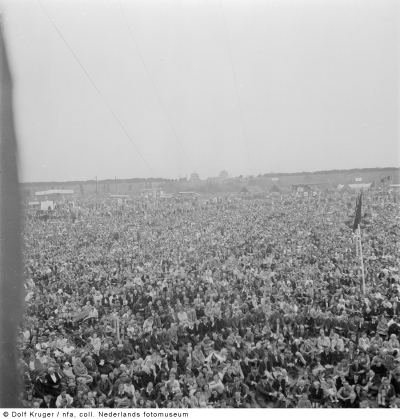De Waarheid. In the shadow of the reconstruction > De Waarheid
The precursor of the CPN was the SDP (Social Democratic Party) founded in 1909, having De Tribune as party organ. In 1918, the name was changed to Communist Party Holland and from 1935 onwards the party was known as Communist Party of the Netherlands (CPN). After the capitulation, the CPN played an important role in the Dutch resistance. The party's large following in the early postwar years was to a certain extent due to its active role in the resistance. The Cold War played a major part in the party losing a substantial number of members in the 1950s. After the fall of the Lubbers government in 1989, the CPN merged with other parties to form Green Left and was finally disbanded in 1991.
The first edition of De Waarheid appeared on 23 November 1940. During the war the presses were used to print illegal printed matter. The newspaper experienced a peak in the postwar years, with a circulation of approximately 300,000 in 1945. The publishing ban on De Telegraaf (Dutch daily morning newspaper) until 1949, certainly played an important role in this regard. In 1955, the number of subscribers, however, was reduced by half.
A substantial drop in 1956 was caused by the Soviet invasion of Hungary. Felix Meritis, the headquarters of the CPN, was stormed by furious crowds who attempted to stop the publication of De Waarheid by destroying the printer. Not only a large number of subscribers left but advertisements and orders by private individuals for printed matter were withdrawn. The last edition of De Waarheid was published on 28 April 1990. Until 7 March 1991, De Waarheid was temporarily continued by the weekly Forum and as of 2001 in digital format on Dewaarheid.nu.
Uilenspiegel. Weekblad voor het gezin (Weekly for the family) was published from 11 November 1950 until 26 March 1965 by the CPN. Despite the magazine's light-hearted nature it was involved with its readers, or as the editorial staff described it in 1965: ‘Playful, bold without being trivial, entertaining but with human compassion.' It was richly illustrated with photos, drawings, comic strips and cartoons.

